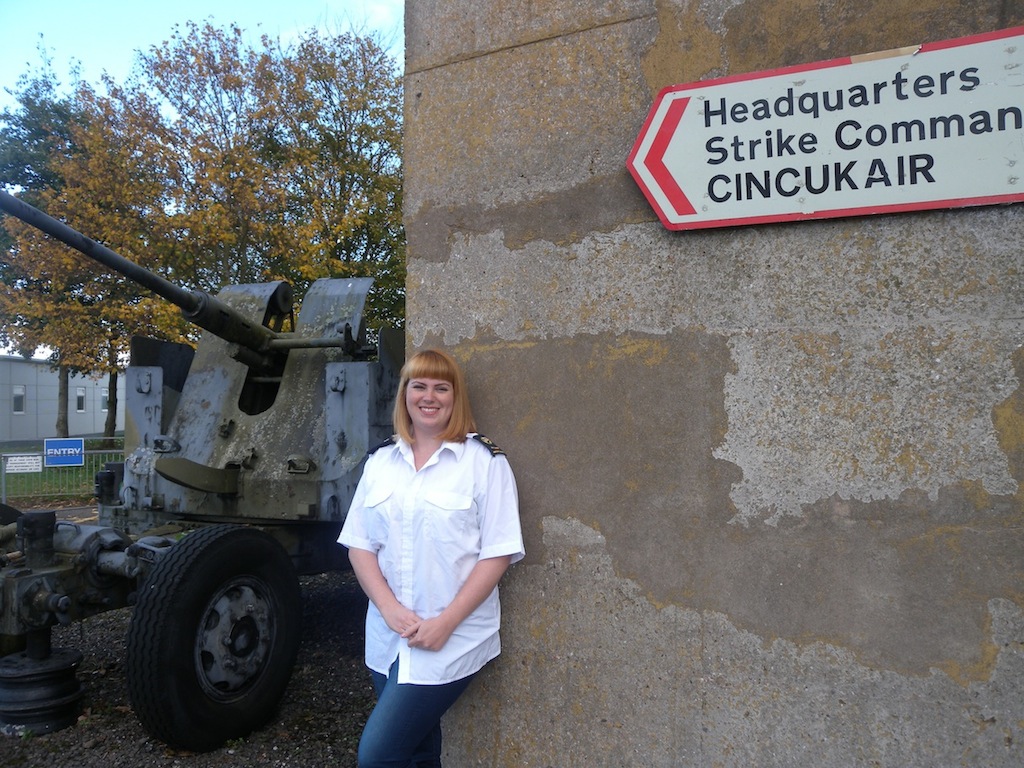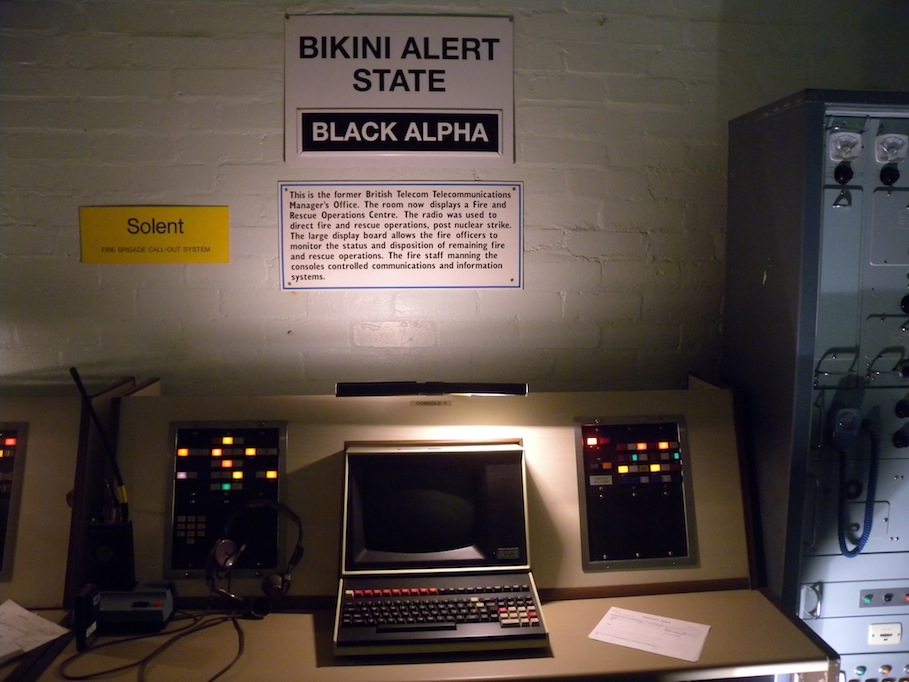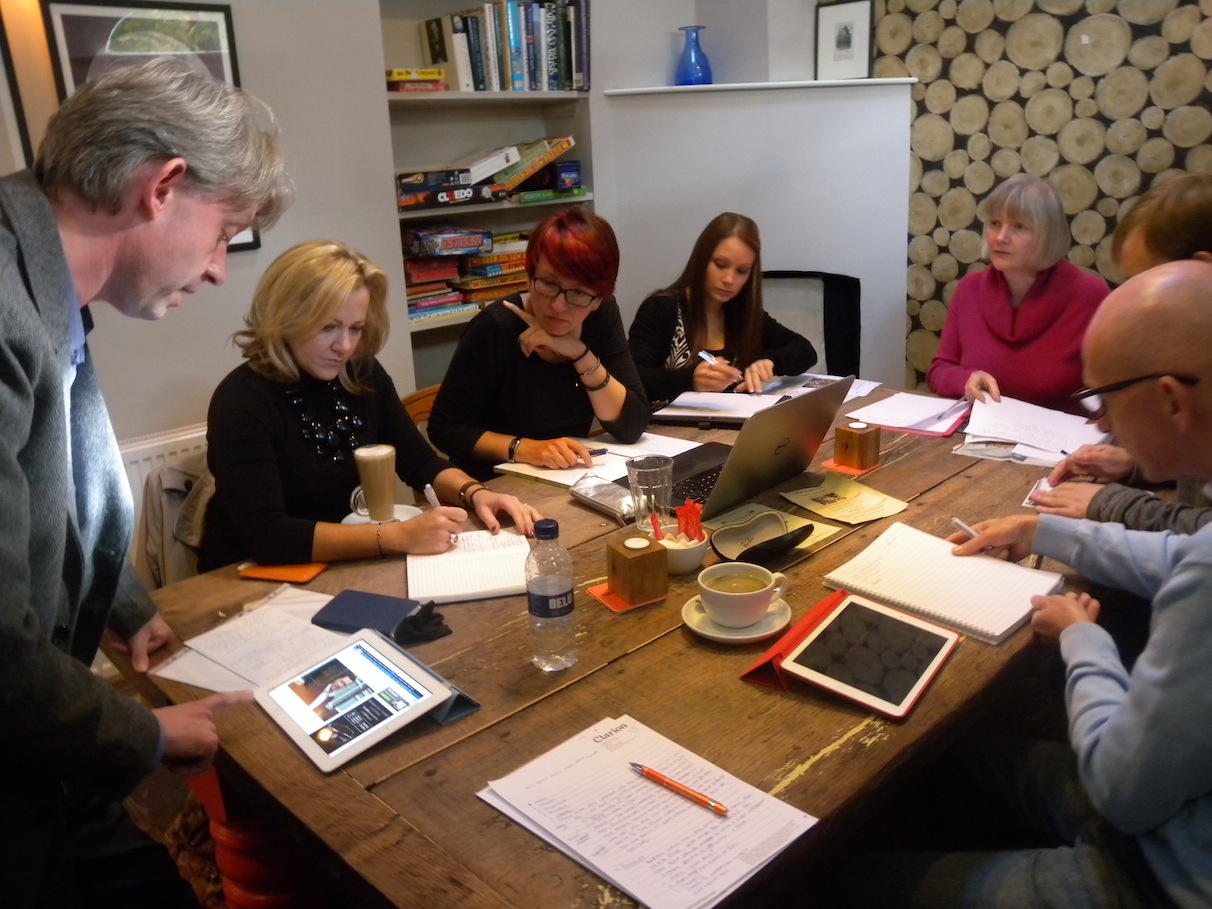There’s a party planned in rural Cheshire.
“My birthday,” says Lucy Siebert [pictured above], her epaulettes quivering like the top-lip foliage of a retired colonel. “It’s fancy dress.”
But this is no ordinary birthday party. Lucy was born November 9, 1989 – the day the Berlin Wall fell and the Cold War, ostensibly, ended.
A day in history
The memorable date, marked by events in Germany next weekend to celebrate the 25th anniversary, was to have a profound effect on Lucy from an early age.
Today she is the manager of the Hack Green Secret Nuclear Bunker, a two-acre site outside the Cheshire market town of Nantwich. She aims to make the erstwhile secret military facility home to the largest Cold War heritage collection in the UK.
“My generation was born at the cusp of the Cold War. It’s not a forgotten war, it still effects peoples’ lives,” explains Lucy drinking coffee next to an anti-mine yellow submarine in the museum café.
“Most people find nuclear war very dark but I’m matter-of-fact about it,” she adds, her shocking pink nail varnish contrasting with her military-style garb.
“People ask me what to do in the event of a nuclear attack. My answer,” she deadpans, “is to run as fast as possible towards the blast and pick up your kids on the way.”
Dark history
Hack Green was built in 1938 and formed part of ROTOR, a network of underground radar stations. Mrs. Thatcher’s Conservative government expanded the facility in the Eighties as Cold War tension grew.
After a £32m renovation from 1979 to 1983, it became home to 135 Cheshire civil servants, plus one of 12 UK regional commissioners.
Its role was to protect the bureaucracy of infrastructure – based on the assumption that only 10% of the British population could survive a nuclear attack.
My visit coincides with the release of files at the National Archives based around a secret Home Office exercise in 1982, codenamed Regenerate, to test the UK’s capacity to rebuild after nuclear war.
Controversially, the report includes a suggestion by Jane Hogg, then a scientific officer in the Home Office, to recruit psychopaths to help keep order in disaster-struck areas.
“These are the people who could be expected to show no psychological effects in the communities which have suffered the severest losses,” she wrote.
Unique collection
Hack Green was finally declassified in 1992 as Glasnost spread across the East and Lucy’s father bought it in 1995, opening the bunker as a museum and visitor attraction in 1998.
The collection today extends to hundreds of items – all real, no replicas – saved from car boot sales, British Telecom (BT) offices, BBC Radio studios and military festivals amongst others.
“This bunker is a testament to fear. I don’t envisage another World War but another Cold War in my lifetime is quite a possibility,” explains Lucy, who studied film at Herefordshire University and originally wanted to be a film director.
Afterwards I explore the exhibition, moving from a BBC studio for emergency broadcasts to a BT manager’s office via a briefing room for the Home Office. The nuclear shelter replicates the experience of the blast while in a hiding in a fallout shelter.
The atmosphere is musty deep underground and the cold stone corridors have an eerie, nightmarish quality to them, a feeling of unease accentuated by the regular blasts of the ‘Alert Code Red’ warnings over the PA.
The tour leads towards a dramatic denouement with a ghoulish display of plastic mannequins with fake injuries, accompanied by a looped recording of patients whimpering from their injuries, in the sick bay.
Future plans
But what strikes me most of all as I explore is how close we came to the brink and, creepily, how serious world governments took their preparations for what they considered an inevitable conflict.
As more documents are released, our knowledge of the Cold War period will grow and interest in its cultural heritage will evolve.
“There are still bunkers open as we speak and they are preparing for the next emergency situation,” smiles Lucy as I say my goodbyes and prepare to head out into the bucolic Cheshire countryside, rather than a post-apocalyptic landscape.
“When the Berlin Wall fell, world leaders thought it was all over – but it’s not,” says Lucy enigmatically.
“The shadow of the Cold war looms larger than ever over us.”
Gazetteer
The nuclear attack on the UK that never happened
Hack Green Secret Nuclear Bunker
Liked this? Try also A Cultural New Year in Tallinn, Estonia



